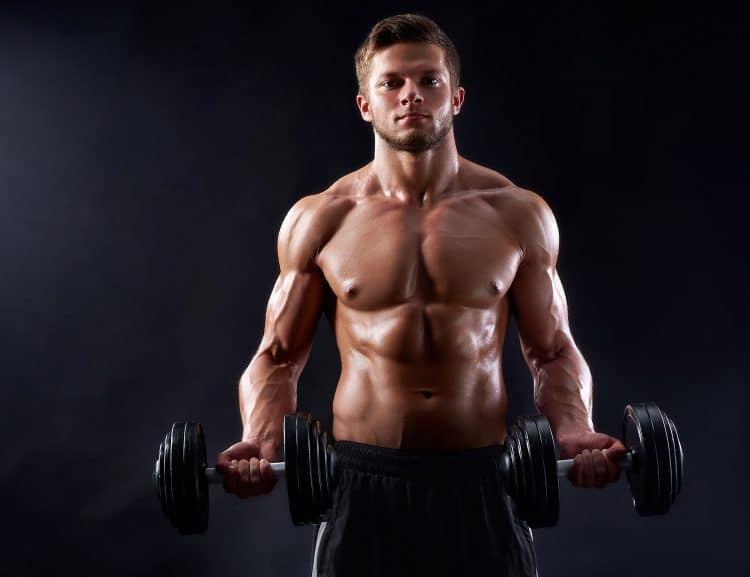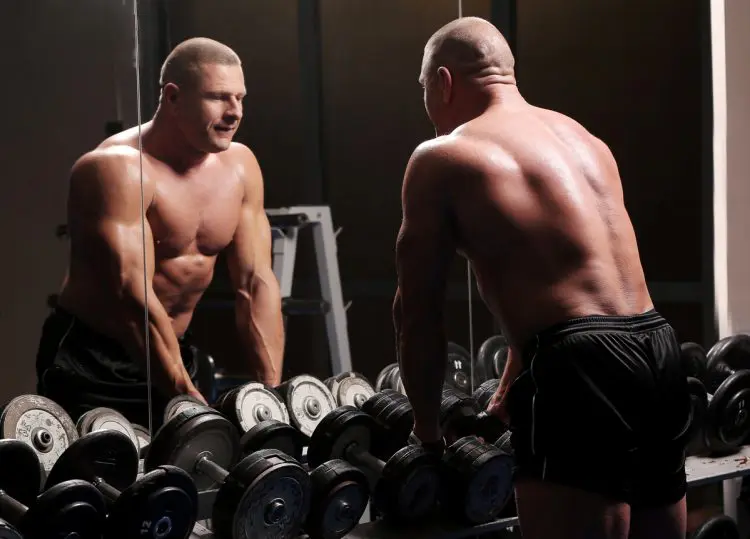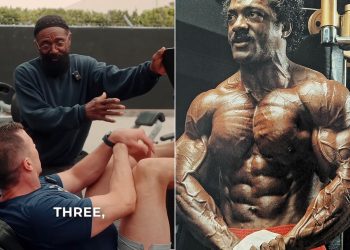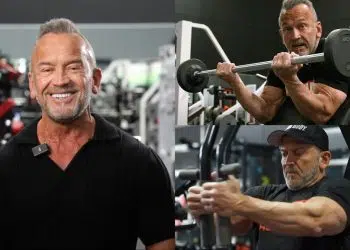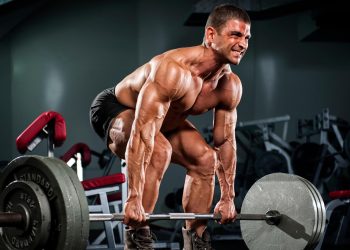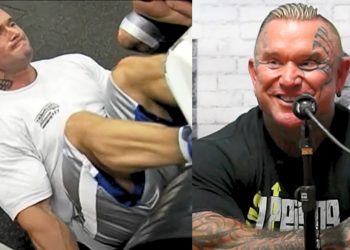The old saying that states you need to lift big to get big has echoed the halls of every serious gym for decades. From the feats of Dorian Yates and Ronnie Coleman to the sometimes antics and attention seeking influencers of social media, larger muscles are synonymous with heavy weights.
For many lifters a bit longer in the tooth this translates into hurt joints and damaged egos. Cranky knees, painful elbows, and chronically tired lower backs are common amongst those who have dared their safety and sanity. Many believe that it’s the price we pay to grow larger and the cost of living our “best lives” while projecting to the world.
But there is another way. A safer way. And dare I say, a more effective way to build muscle. Let’s break a few things down and reveal how we can build an impressive physique without causing more damage to our bodies.
Why lift big?

For ages we’ve believed that lifting heavier results in larger muscles. The progressive overload principle is sound in that it states that as we progressively overload our bodies with resistance, our targeted muscles will inherently grow larger. By taxing a muscle it will respond with thicker muscle fibers in order to be prepared for the next bout of resistance.
Bodybuilding and social media, however, have propelled and bastardized the overload principle by showcasing exaggerated feats of strength (stupidity?) and exploited this sound and solid principle.
Level Up Your Fitness: Join our 💪 strong community in Fitness Volt Newsletter. Get daily inspiration, expert-backed workouts, nutrition tips, the latest in strength sports, and the support you need to reach your goals. Subscribe for free!
But where is the line? What is the limit to heavier loads? Are we to continue risky form, avoid function, and threaten our health and safety for a few seconds of ego-boosting dopamine?
Side effects of lifting big
It goes without saying that for anyone who has partaken in such extreme behavior the side effects are numerous. And they’re not positive.
Of course you subject yourself to torn shoulders, elbows, backs, knees, and hips. You may also have chronic soreness, an exhausted nervous system, and depleted energy. Sure you may get psyched up for your big ego lifts, but you lose something else just as important as a pain-free weekend.
Lifting like a powerlifter starts to prevent you from the reason you started lifting in the first place. Let me put it this way: when it comes to building muscle, you’re doing it wrong by lifting weights instead of training your body.
Lifting heavier and heavier with your ego is the act of lifting a weight from point A to point B. Training your body is the act of guiding the weight from point A to point Z. Form, feel, function, and focus become the predominant attributes despite how much weight is on the bar. Your goal of building muscle dictates the amount of weight, not the other way around.
Lift this way instead
Stop for a moment and really think about the last six months, year, or maybe even the last three years. Have you gained an appreciable amount of muscle regarding your efforts of lifting heavier and heavier and sacrificing form?
I will venture to say that you can’t honestly answer that in the positive.
More than likely you’re stuck, in a plateau, and are in need of a change. But change is hard. For many of us, our lifting life is tied tightly to our ego. No, we’re not narcissistic or overly vain, we happen to identify ourselves through our strength, size, and hard-work ethic. To make any significant shift will seemingly threaten those values.
A study from the Journal of Applied Physiology concluded that using lighter loads resulted in similar gains in hypertrophy as higher loads. But, you may be asking, if the higher loads aren’t giving you the results you’re wanting then why would lighter loads be any different?
Let’s list a few advantages.
- You’ll stress your nervous system less for better, more effective recovery between workouts.
- You’ll create a better mind to muscle connection with the targeted area. More reps will create improved inroads to the connection.
- Your joints will thank you over time allowing you to lift into your older years.
- Ego is no longer a factor. You’re there to build muscle, not solely to get stronger.
Advantages
Now let’s look at a few key principles to follow before going out and lightening your load for more mass.
How to lift lighter for more muscle mass
1- Lighter doesn’t mean easier
Level Up Your Fitness: Join our 💪 strong community in Fitness Volt Newsletter. Get daily inspiration, expert-backed workouts, nutrition tips, the latest in strength sports, and the support you need to reach your goals. Subscribe for free!
It’s almost a common belief that lighter loads are for “cutting” while heavier loads are for muscle and strength. Nonsense! A set of squats for five reps to failure is much different than one taken to 15 reps to failure. If you are using a lighter weight you will still need to take the set to muscular failure.
Whereas on the set of five reps the last one or two will require a high level of effort, for the lighter load set the last five or more reps will require ever more focus, attention, and intensity.
2- Form is even more important
With more reps comes more of an opportunity to loosen up and use a bit more “body English.” As it’s extremely tempting to loosen up in order to squeeze out those last few reps, don’t do it. Form may be even more important for higher rep sets since you’re under a longer time of tension and run a bigger risk for injury.
Another factor to consider is rep speed. You may have the tendency to perform rapid rep speeds. This could possibly be due to the desire to get the set over with since the time under tension is greater than that of lower rep sets. Resist this urge as well. Keep a steady one or two seconds for each stroke of the movement.
3- Keep rest on your radar
If you’re the heavy lifter type looking for change then higher reps will be a significant change. You may feel a bit exhausted when you first adopt it. A set of 15 rep squats, for example, may have you bent over heaving for oxygen. This is simply your system trying to adapt to the new stimulus.
Conversely, you may think higher rep workouts equate to a more circuit style cadence. Again, this is the wrong mindset. Treat your workouts the same as before, but keep a close eye on the clock. Rest only one and two minutes between sets. Remember, you’re there to exhaust the muscle, recruit more muscle fibers, and ultimately build muscle mass.
4- Progress is still key
As stated earlier, you still need to apply the same principles to higher rep training as you did your heavier load training. Progressive overload is still a major factor in building muscle. Keep a notebook for your training. Record exercises, sets, reps, and weights. Review those notes from a previous workout each day and determine if anything needs to be adjusted.
Try adding a few more pounds or another rep to each exercise. This will ensure your head is in the game toward progress.
5- Give it time
Lastly, starting anything new will require some time regarding results. Your body may need a few weeks to adapt and show any progress. Your strength may appear to take a hit, but you’ll soon start to see results if all of the principles above are followed.
Over time your strength will start to increase, your joints will start to feel better, and your muscle bellies will be extremely sore. Your system will adjust and recovery will catch up and you’ll start progressing under this new training stimulus.
Sample high rep training program
Let’s look at a sample routine using a higher rep range. Remember to keep the from, rest period, overload, and patience suggestions above in mind.
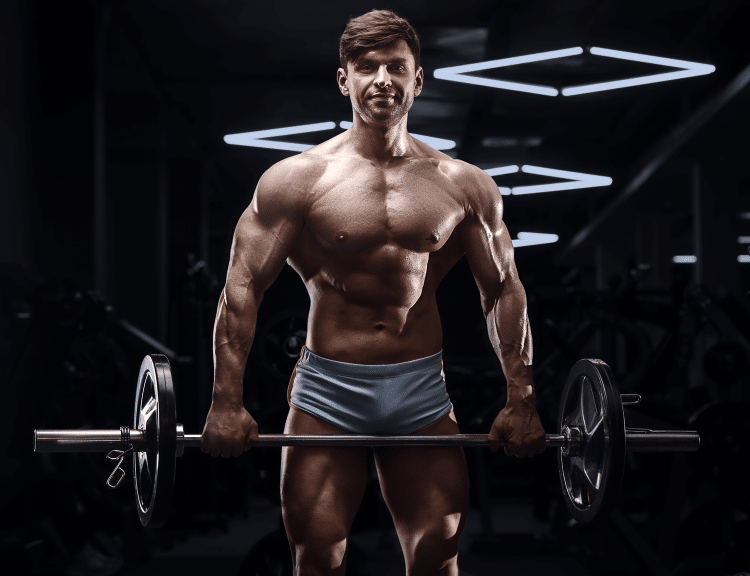
Perform the following routine as a three on, one off, or two on, one off rotation.
Day 1
- Incline bench barbell press 3 x 8-12
- Flat bench dumbbell press 3 x 10-15
- Machine fly 3 x 10-15
- Wide grip pull up 3 x as many as possible
- T-bar or close-grip pulley row 3 x 8-12
- Medium grip pull down 3 x 10-15
Day 2
- Standing military press 3 x 8-12
- Triset:
- Dumbbell lateral raise 3 x 12-20
- Bent-over dumbbell lateral raise 3 x 12-20
- Dumbbell shrug 3 x 12-20
- Incline dumbbell curl 3 x 10-15
- Barbell curl 3 x 10-15
- Lying barbell triceps extension 3 x 10-15
- V-bar pressdown 3 x 10-15
Day 3
- Standing calf raise 3 x 10-15
- Seated calf raise 3 x 10-15
- Barbell back squat 3 x 10-12
- Leg press 3 x 15-20
- Barbell Romanian deadlift 3 x 10-12
- Lying leg curl 3 x 10-12
In Closing
If heavy loads and low reps haven’t worked for a while and you’re suffering from sore joints and chronic soreness in your lower back try a higher rep range for a while. You’ll not only save your joints you may even gain some serious mass in the meantime.
References
- Robert W. Morton, Sara Y. Oikawa, Christopher G. Wavell, Nicole Mazara, Chris McGlory, Joe Quadrilatero, Brittany L. Baechler, Steven K. Baker, Stuart M. Phillips. Neither load nor systemic hormones determine resistance training-mediated hypertrophy or strength gains in resistance-trained young men. Journal of Applied Physiology, 2016; 121 (1): 129


